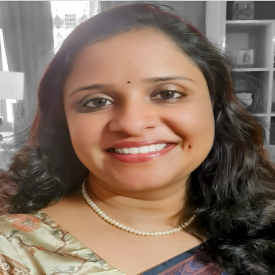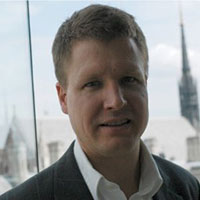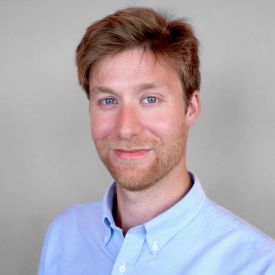Enhancing secondary school learning: Role of remedial camps and teacher flexibility
A key dilemma in Indian education is that while children are enrolled in school, they are not actually learning. Based on an experiment in Odisha, this article explores possible solutions to the learn...
-
 Sabrin Beg
Sabrin Beg  Anne Fitzpatrick
Anne Fitzpatrick  Jason Kerwin
Jason Kerwin  Adrienne Lucas
Adrienne Lucas  Khandker Wahedur Rahman
Khandker Wahedur Rahman  08 April, 2024
08 April, 2024
- Articles
Second Ashok Kotwal Memorial Lecture: Inequality, Labour and Social Democracy
The Ashok Kotwal Memorial Lecture was instituted in 2022, in memory of our founding Editor-in-Chief, as an annual lecture on key issues of development. For its second edition, I4I hosted Professor Pra...
-
 Pranab Bardhan
Pranab Bardhan  I4I Team
I4I Team  20 December, 2023
20 December, 2023
- Videos
Economic development, the nutrition trap, and metabolic disease
Two recently documented facts run counter to the conventional wisdom that economic development leads to better health: the absence of a clear link between income and nutritional status in developing c...
-
 Nancy Luke
Nancy Luke  Kaivan Munshi
Kaivan Munshi  Anu Mary Oommen
Anu Mary Oommen  Swapnil Singh
Swapnil Singh  10 January, 2022
10 January, 2022
- Articles
The impact of community-based depression treatment in India
Although the prevalence of depression may have adverse economic impacts, especially in developing countries, treatment options in India are limited by a shortage of providers. This article looks at th...
-
 Manuela Angelucci
Manuela Angelucci  Daniel Bennett
Daniel Bennett  23 August, 2022
23 August, 2022
- Articles
Remedying poor student assessment data in India
Taking into account existing evidence on the accuracy of administrative data on student learning levels in India, Singh and Ahluwalia discuss why a reliable system of student assessment matters; fixin...
-
 Rahul Ahluwalia
Rahul Ahluwalia  Prakhar Singh
Prakhar Singh  26 July, 2022
26 July, 2022
- Perspectives
To invest in sanitation or not? The role of gender differences in perceptions
Although sanitation is essential for health, many households remain without a toilet due to financial constraints. This article describes the extent to which perceptions of costs and benefits of sanit...
-
 Britta Augsburg
Britta Augsburg  Bansi Malde
Bansi Malde  Harriet Olorenshaw
Harriet Olorenshaw  Zaki Wahhaj
Zaki Wahhaj  22 July, 2022
22 July, 2022
- Articles
Access to health insurance in India: Direct and spillover effects
Many low-income households in India have been pushed into poverty by high healthcare costs. Uptake of the Rashtriya Swasthya Bima Yojana, the government-run national health insurance programme for bel...
-
 Gabriella Conti
Gabriella Conti  Cynthia Kinnan
Cynthia Kinnan  Anup Malani
Anup Malani  Alessandra Voena
Alessandra Voena  01 July, 2022
01 July, 2022
- Articles
Assessing the extent and fiscal cost of teacher shortages in India
The New Education Policy has proposed that the one million teacher vacancies in public elementary schools be filled imperatively. Using 2019-20 District Information System for Education (u-DISE) data,...
-
 Sandip Datta
Sandip Datta  Geeta Gandhi Kingdon
Geeta Gandhi Kingdon  22 June, 2022
22 June, 2022
- Articles
Using machine learning to target neonatal and infant mortality
India accounts for one-fourth of the world’s neonatal mortalities, and this has likely been exacerbated by the Covid-19 pandemic – due to lockdowns and lack of access to critical antenatal and pos...
-
 Dweepobotee Brahma
Dweepobotee Brahma  Debasri Mukherjee
Debasri Mukherjee  17 May, 2022
17 May, 2022
- Articles
Covid-19: Identifying and addressing vaccine hesitancy using ‘personas’
Vaccine hesitancy poses a threat to India’s fight against Covid-19, and given the different motivations that drive vaccine hesitancy, a one-size-fits-all solution may not be feasible. In this post, ...
-
 Ishank Daral
Ishank Daral  Sneha Shashidhara
Sneha Shashidhara  22 April, 2022
22 April, 2022
- Perspectives
Does increasing female representation in school management improve school quality?
The 2009 Right to Education Act (RTE) mandated public and private aided schools to constitute School Management Committees (SMCs) to improve accountability in schools through community participation. ...
-
 Chandan Jain
Chandan Jain  Bharti Nandwani
Bharti Nandwani  18 April, 2022
18 April, 2022
- Articles
How RSBY impacted healthcare utilisation and spending
Social Health Insurance seeks to protect the poor from high health spending, and encourage healthcare utilisation. Analysing 2004-05 and 2011-12 Indian Human Development Survey data, this article find...
-
 Souvik Dutta
Souvik Dutta  Subhasree Sarkar
Subhasree Sarkar  31 March, 2022
31 March, 2022
- Articles
Covid-19 in India: Cases, deaths, and vaccinations
The Omicron variant resulted in a third major wave of Covid-19 in India, with the number of cases exceeding those in the second wave, albeit causing less severe illness on average. In this post, Kundu...
-
 Rachel M. Gisselquist
Rachel M. Gisselquist  Anustup Kundu
Anustup Kundu  16 March, 2022
16 March, 2022
- Perspectives
How cleaner cookstoves and fuels could benefit women’s health and the environment
With lesser access to financial resources and greater domestic responsibilities, women face the brunt of the climate change crisis. In particular, women are more affected by indoor air pollution cause...
-
 Siobhan Siu Bai McDonough
Siobhan Siu Bai McDonough  Nikita Sharma
Nikita Sharma  07 March, 2022
07 March, 2022
- Articles
Budget 2022-23: The elephants and the ostrich
Analysing India’s 2022-23 Union Budget, Neeraj Hatekar contends that MNREGA, the rural job guarantee programme that has not received additional funding vis-à-vis 2021-22 budget estimates, should be...
-
 Neeraj Hatekar
Neeraj Hatekar  09 February, 2022
09 February, 2022
- Perspectives
Twitter feed
Tweets by Ideas4IndiaMost Popular Human Development Posts
Hindu-Muslim fertility differentials in India: District-level estimates from Census 2011
The 2011 Indian Census data show a higher growth rate of Muslim population compared to the Hindu population. This article provides an in-depth picture of Hindu-Muslim fertility differentials at the di...
 Saswata Ghosh
Saswata Ghosh  27 March, 2019
27 March, 2019
- Articles
Ten steps to transform the quality of education in India
In this article, Sridhar Rajagopalan, Managing Director of Educational Initiatives, suggests 10 initiatives that can help transform the quality of education in India.
 Sridhar Rajagopalan
Sridhar Rajagopalan  19 November, 2015
19 November, 2015
- Perspectives
Understanding India’s mental health crisis
Since the onset of the Covid-19 pandemic, several reports have indicated a worsening of mental health issues among individuals across age groups. In this post, Michele Mary Bernadine examines the stat...
 Michele Mary Bernadine
Michele Mary Bernadine  06 April, 2021
06 April, 2021
- Perspectives





 24 April, 2024
24 April, 2024






